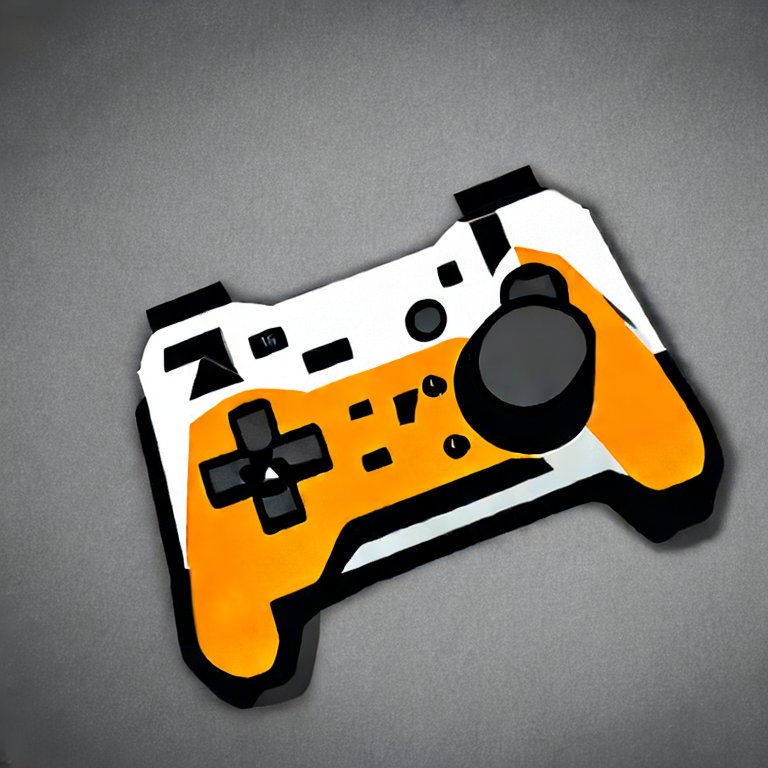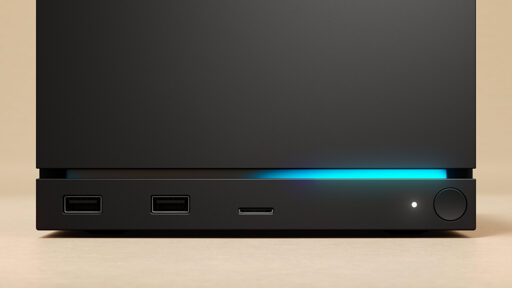The title is a bit misleading, as the article lists diverging analysts’ opinions, ranging from Valve willing to sell at a loss or low margins, to high prices due to RAM and SSD price volatility.
cross-posted from: https://lemmy.blackeco.com/post/2330473
No. It’s going to be sub PS5 in terms of performance and should be priced accordingly. You can make the argument that games are a bit cheaper on Steam so they can maybe charge a premium for that.
I am ostensibly the target market for this as I refuse to play games at my desk, only the couch. But I would love to get into the Steam ecosystem and play on my couch and PCVR titles. But I would only consider one if it could do the things my PS5 does at a similar price for both the system and VR headset.
Valve willing to sell at a loss
I don’t think that Valve will sell the Steam Machine at a loss.
Closed-system console vendors often do, then jack up the prices of their games and make their money back as people buy games. So why not Valve?
Two reasons.
-
They sell an open system. If Valve sells a mini-PC below cost, then a number of people will just buy the thing and use it as a generic mini-PC, which doesn’t make them anything. A Nintendo Switch, in contrast, isn’t very appealing for anything than running games purchased from Nintendo.
-
They don’t have a practical way to charge more for games for just Steam Machine users — their model is agnostic to what device you run a purchased game on. So even if they were going to do that, it’d force them to price games non-optimally for non-Steam-Machine users, charge more than would be ideal from Valve’s standpoint.
Steam deck has customization you can buy with their points, I could see them getting some extra game sales that way
Hah, this is where they get you and I’ve been dogpiled for raising this as an issue continuously. This is an illusion of an open system. Where are you going to buy games for Steam Machine? Steam obviously, there’s no competition. Then as your library grows you get more and more vendor locked. Then Valve does an Android application notarising switcheroo and you have Linux machine that’s no different from a Mac or an Android phone. Of course they can subsidise it because they can recoup it thanks to 30% cut and it’ll only accelerate the process.
Theoretically people could use it for a cheap non-gaming PC, except the cheapest non-gaming PC would be non-gaming specs.
Anyone using it for cheap crypto-mining is an idiot, the cheap option there is a rack full of bang-for-buck GPUs.
Are there any other use-cases that involve gaming-PC specs? Making videos, perhaps?
Could be good for some home automation workflows- plex server, transcribing security cam video, doing object detection on said video.
-
It’s going to be more than an Xbox, but not too crazy. Probably $800 is my guess.
Doubt they’ll be that pricey. I think they’re aiming for 600ish or thereabouts. I’m not the target audience (beefy gaming pc) but I love the concept and what it’ll do to further indie gaming. It’ll probably also pull people from consoles to pc gaming. Valve can’t stop winning.
Also, they use standard components. You can get the cheaper Version and upgrade in e prices drop. The beauty of pc gaming.
The problem is dram prices right now are crazy so the price might get pushed up quite a bit
Depends on whether they negotiated contract pricing beforehand. The price increases aren’t because of manufacturing cost increases, they’re because of high demand. Retail pricing isn’t really related to bulk wholesale contract pricing at all.
I think they might eat the extra costs because they know they’ll more than recuperate it from increased software sales. Hell, XboX as a console was a loss leader for MS for over a decade.
The issue is that if you sell the PC at a loss, you’re effectively subsidzing every person and business who wants an SFF-PC but may not necessarily buy games for them. It’s not like the Steam Deck where you can bet the majority of those devices are ending up in the hands of gamers.
I built a $700 Bazzite-based Steambox with some parts used and the Steam Machine seems about par on performance and is both better looking and has additional features so … yeah
What GPU/CPU did you go for to fit into that budget?
Asus B360 Prime with 32GB RAM i5 9400F CPU 6700 XT GPU w/ 12GB VRAM
(all of that used)
… however, I originally bought it all for a virtual pinball build so I’m sure it could be done better with Bazzite in mind from the start.
I went with a white+birch Lian Li A3-mATX to get something barely good looking enough to fit with the rest of the gaming room.
Can get an ‘aoostar GODY’ on AliExpress for US$1000. Basically the same GPU, 16GB RAM, 512GB SSD. The steam machine has less cores and less ethernet. Though it also has a way bigger heatsink, LEDs and extra Bluetooth/valve gamepad antenna.
Comparing the deck to comparative brands, it is wayyy cheaper. I think valve are going to be aggressive on price, especially when the CPU/GPU are fairly old and meek.
And beyond the aggressive pricing, the one major benefit over other miniPC makers is the extensive support.
I have a Minisforum mini PC. Took Minisforum over a year to release BIOS updates that were finished in March 2024… and against all CS promises it still hasn’t fixed the initial discrepancies (advertised as the only 8945HS mini PC that can go over 57W due to their improved cooling, and the only Ryzen 8000 series APU that can handle RAM at 5400-5600MT/s - still can’t get power over 57W and even though I have compatible RAM, it refuses to clock over 4800MHz, and there’s no option to configure it either).
Meanwhile Valve is still dropping improvements on the Steam Deck, 3.5 years after release.
The Steam Machine seems to be using the Nintendo model of using low cost off-the-shelf parts instead of expensive custom components.
Then again the Steam controller and VR headset seem kind of fancy.
Hopefully, they get very popular and manages to steal significant market share from Windows.
Yeah true the index headset wasn’t a bargain compared to the quests that were clearly being sold as cheaply as possible.
Meta sold Quest headsets at a loss to cover the market. Valve sold the Index for profit.
I don’t think it would make sense for them to sell it at a loss. On the other hand, they don’t have to make a huge profit from it either. I really hope it’ll come down to a range of about €600. That would make it a no-brainer for me.
The rumor is that the cpu in the steam machine is leftover from another AMD partnership with Microsoft. The GPU is a mobile GPU that AMD had a hard time selling. It’s about the same performance as a PS5, though valve won’t be subsidizing it as much. I’d bet $600-$800.
Based on the specs it is a bit bumped up Ryzen 7000/8000 series (Zen 4 arch), with a beefed up GPU (sounds to be about two 780Ms soldered together with a bit of overclocking).
I wouldn’t be surprised if MS wanted a mid-generation upgrade to the Xbox but the current economic situation put a damper on it before the hardware could fully materialise and AMD ended up with a practically ready for production APU they couldn’t sell to anyone before Valve strolled up.
They already tried that with the original steam machines and it flopped hard. It’ll be significantly better value or it’ll flop again, simple. They’re clearly optimizing for price based on the vram/ram specs. Yeah maybe it’ll go up after launch but out of the gate it’ll be sub-$500/512gb otherwise the whole exercise is pointless
This isn’t why it failed. It failed because the software, user experience, and compatibility was immature. That is no longer the case, as proven by the steamdeck, and offering a mature ecosystem with VR, controller, and console/PC that all interact seamlessly will be the major selling point.
I’m expecting $799.99 for the low storage model, and if it performs as well as a typical $1000-$1200 PC, I think they’ll enjoy the same level of adoption seen by the Steamdeck. The target will be people looking for an entry level to PC gaming, and current PC enthusiasts on lower end hardware looking for an upgrade that’s simple and reasonably positioned price wise against traditional PCs.
It failed for multiple reasons, but a big reason was that they tried to outsource the hardware and basically just got reskins of existing gaming-PC prebuilds, which didn’t actually make PCs any less confusing. And they didn’t actually save money (and some were overpriced scams) so buyers were basically forced to do as much research as buying an actual gaming PC.
All of that will be solved, and the software/UX/other stuff you mentioned are far more mature, like you say.
Also some of those old steam machines were comically expensive, in part because all the different vendors wanted a cut, in part because some of them made new cases
edit: found a spec sheet for the cheapest version of Bolt II, for almost $1800 you got a gtx 760 and i5 4590, 16 gigs of ddr3, 120gb ssd + 1tb hdd. All of it air cooled. I don’t remember new hardware prices back then but it seems steep. And it’s far from the most expensive one.
edit2: on the other end of the spectrum, for $400 (without an OS) you could get ibuypower’s SBX with an athlon x4 840, 4 gigs of ram and an r5 250X
VR, controller, and console/PC that all interact seamlessly
I don’t see it as a killer feature. In fact, the main advantage of these individual devices (as in the new ones, not Steam Deck) is that you don’t need the others, rather than that they interact seamlessly.
e.g with Steam Frame, you don’t need a gaming PC to actually run Half Life Alyx to be able to play it. If you already have a gaming PC, at most it offers minor advantages over any other VR headset.
e.g with Steam Machine, you don’t need a gaming PC to engage with the Valve ecosystem and play on your TV. If you already have a gaming PC, you can already stream it to your TV for free.
Also, ecosystem maturity won’t fundamentally change that as a prospective steam machine customer, you will still need to configure game settings. You will still accidentally touch the trackpads in a way that causes issues in some games. Granted, the relative maturity and design improvements will make a big difference. But it’s more of a difference in customer retention and satisfaction than a difference that will get Valve’s foot in the door with someone invested enough in gaming to prefer a more open ecosystem, yet not invested enough to already own an equivalent console or equivalent/better gaming PC.
There are many ways they could leverage a lower cost which Sony/MS can’t/won’t, e.g. make generic controllers compatible, sell the console without one, recoup margin on steam controllers (one of the highest-margin tech product categories around these days)
Competing with the console prices is not likely. Not only will they probably sell hardware at a loss, but they step on Sony and Microsoft territory, with whom they have deals to bringing games to steam.
Selling at a loss works for consoles because games will recoup the loss. For pc there is no guarantee. If the steam box is that cheap, corporate sector will order steam machines (by the 100s or 1000s), without guarantee to recoup the loss.
Microsoft and Sony have no leverage at all over Valve when it comes to PC sales. Reneging on their deals to bring their published games to Steam would only mean fewer sales.
I’m supportive of the effort, but unless it’s under $500 (it’s not) it’s garbage and DOA.
Prebuilt PC market is fucked, it could be 800 and sell like crazy, if the experience is good
Doubt it.
The steam deck provides at least a compelling reason and it didn’t sell all that great. This is just pissing money away on shitty hardware.
Console buyers are not going to be pulled away from their eco systems and PC builders are going to know better. At best they’re going to get a sliver of the pre built market and they will quickly adjust while the box sku will remain largely untouched.
I’m looking for small cheap boxes to put in other rooms for the family and to replace consoles and it’s a non starter for me. Who is actually going to purchase this thing?
You could buy a refurbished laptop, or spend a few extra bucks and get twice the GPU 🤷♂️ and a machine with proper RAM and vRAM.
Price out a build that will compete with this and not require an ATX tower.










